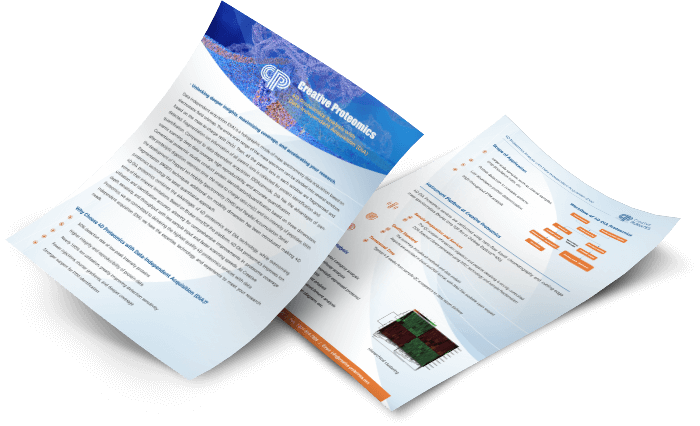Plant Tissues Qualitative and Quantitative Solutions
Protein is the basis for all plant cell functions, physiological activities, phenotypes, and pathogenic microorganisms. Proteomics can identify a broad spectrum of proteins in the plant living system, contribute to understanding the nutritional value, molecular mechanisms of drug resistance, physiological and pathological activities of plants, and accelerate the development of crops and other fields.
Mass spectrometry proteomics has become a major approach for high-throughput systematic studies in the last decade, especially in quantitative proteomics. It has been widely used in both discovery and targeted analyses. Recently developed complete proteomic spectroscopy assays such as DIA/swath-MS and targeted methods allow high-throughput, reproducible, and systematic proteomic measurements of plant tissues.
Our Plant Tissues Qualitative and Quantitative Analysis Services
Creative Proteomics offers qualitative and quantitative analysis for plant tissues, e.g. plant systems biology, expression profiling, and comparative proteomics with our discovery and target proteomics platform.
Using our Discovery Proteomics Platform, we can quantify and identify thousands of proteins in each sample and screen out the significantly regulated proteins in the developed crops. The Discovery Proteomics platform combines shotgun proteomics (i.e., high-performance liquid chromatography-mass spectrometry data-dependent acquisition) and data-independent acquisition (Dia) analysis to identify protein biomarkers associated with drug resistance and so on. These proteins are then verified through our Target Proteomics platform to allow researchers to understand the nutritional value of the crops and further yield improvement.
Workflow

Application
Plant enzyme analytics
Analyze plant proteome in response to environmental changes
Quantitative determination of endogenous and exogenous protein expression
Quantitative determination of protein expression in different plant tissues
Elucidate regulatory pathways
Advantages
High accuracy
High throughput: more than 9000 proteins can be identified at once
Quantitatively identify nearly all detectable molecules, covering low-abundance proteins/peptides
High repetition rate
Comprehensive sample information storage in first analysis
Sample Requirements
Cells: 1×107 cells/sample
Plant tender leaves and buds: 500 mg/sample
Plant seeds, fruits: 100 mg/sample
Report
- Experimental steps
- Relevant parameters
- Mass spectrometry spectra
- Raw data
- Proteomics analysis results
Since Creative Proteomics provides DIA technology service, we have accumulated extensive experience not only detecting cohort of conventional samples but also providing the one-stop service of DIA+PRM+machine learning for biomarker studies.
References:
- Kai-Ting Fan et al. Application of Data-Independent Acquisition Approach to Study the Proteome Change from Early to Later Phases of Tomato Pathogenesis Responses. Int J Mol Sci. 2019 Feb; 20(4): 863.
- Yueyang Sun et al. DIA-Based Quantitative Proteomics Reveals the Protein Regulatory Networks of Floral Thermogenesis in Nelumbo nucifera. Int J Mol Sci. 2021 Aug; 22(15): 8251.
- María-Ángeles Castillejo et al.Quantitative Analysis of Target Peptides Related to Resistance Against Ascochyta Blight ( Peyronellaea pinodes) in Pea. Proteome Res. 2020 Mar 6;19(3):1000-1012.
* For Research Use Only. Not for use in the treatment or diagnosis of disease.



 4D Proteomics with Data-Independent Acquisition (DIA)
4D Proteomics with Data-Independent Acquisition (DIA)